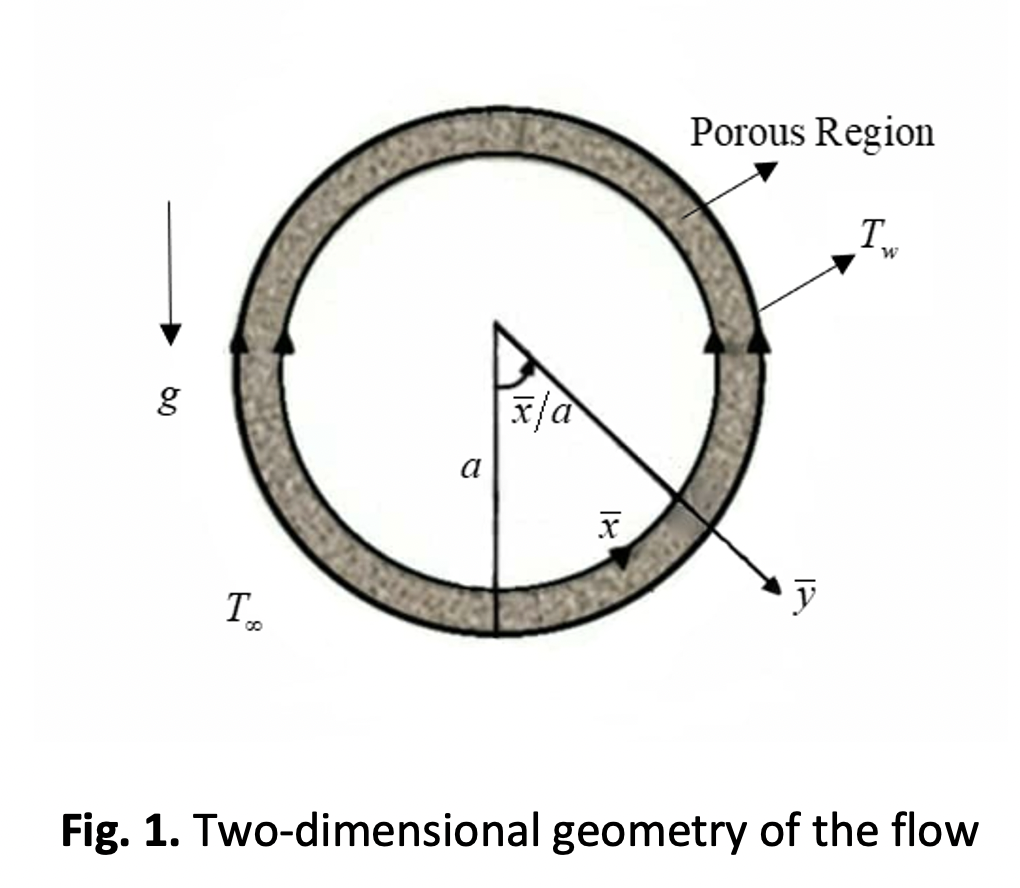Free Convection Boundary Layer Flow of Brinkman-Viscoelastic Fluid over a Horizontal Circular Cylinder with Constant Wall Temperature
DOI:
https://doi.org/10.37934/cfdl.15.1.103114Keywords:
Free convection, Brinkman, viscoelastic, porosity, horizontal circular cylinderAbstract
The demand on the complex model on the study of fluid flow problem is crucial since the real fluid exist in industry applications cannot be presented by the conventional fluid anymore due to the complex properties of the materials. Since then, many mathematicians and scientist try to create the model that can be presented those fluids. Fluid which having characteristics viscous and elasticity can be categorized as non-Newtonian type of fluid due to its relations which against Newton’s Law of viscosity. The application of the fluid is widespread in industrial applications including oils and gas sectors, the automobile industry and manufacturing processes. Paints is one of the examples of viscoelastic fluid since almost wall is painted by the materials polymer and solvents. Therefore, this work is intended to investigate the viscoelastic fluid flow with the porosity condition which then called as Brinkman-viscoelastic model. The flow is presumed to transfer over a geometry horizontal circular cylinder (HCC). The thermal boundary condition is set to be constant wall temperature (CWT). The governing equations which based on Navier Stokes equations are first transformed to the less complex form by utilizing a non-dimensionless and a non-similarity variable. The resulting equations were obtained in the partial differential equations (PDEs) and at the lower stagnation point case, the model is reduced to the ordinary differential equations (ODEs). The Keller-box method (KBM) is applied to solved the final equations. The validation process is performed by direct comparing with the established output in literature and found to be in a very strong agreement. This process is valid since the present model can be reduced to the previous model at the limiting case where the identical equations were obtained. The results of the present model are then computed and presented in tabular form and also illustrated in graphical form. It is noticed that the viscoelastic parameter and Brinkman Parameter significantly affected the fluid flow characteristics.Downloads
Download data is not yet available.



























